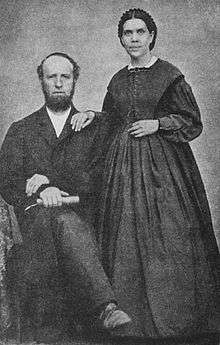Adventist University of the Philippines
| Adventistang Unibersidad ng Pilipinas | |
 | |
Former names |
Philippine Seventh-day Adventist Academy (1917-1927) Philippine Junior College (1927-1932) Philippine Union College (1932-1996) |
|---|---|
| Motto | "On Ever Onward" |
| Type | Private, (Protestant) Adventist university |
| Established | 1917 |
| Affiliation | Seventh-day Adventist Church |
| President | Francisco Gayoba[1] |
| Address |
AUP, Puting Kahoy, Silang, Cavite 4118 Philippines, Silang, Cavite, |
| Hymn | "Shine on Forever" |
| Colors | Blue and gold |
| Nickname | AUP |
| Website | aup.edu.ph |
| Part of a series on |
| Seventh-day Adventist Church |
|---|
 |
|
Adventism Seventh-day Adventist portal |
The Adventist University of the Philippines is a private coeducational Christian university located in Puting Kahoy, Silang, Cavite, Philippines. The university is affiliated with the Seventh-day Adventist Church and holds an autonomous status recognized by the CHED (Commission on Higher Education).[2] It is a part of the Seventh-day Adventist education system, the world's second largest Christian school system.[3][4][5] [6]
History
The Adventist University of the Philippines traces its beginnings from missionary-oriented people who had a strong desire to develop young people for usefulness in life, more specifically to prepare workers for the branches of Christian service.
In 1915, A. G. Daniels visited the Philippine Islands and laid plans for the organization of an academic institution. Daniels was followed by L. V. Finster who reported that in 1916, I. A. Steinel and O. F. Sevrens and their families had arrived to supervise the building of the Philippine Seventh-day Adventist Academy on a five-acre land located at Calle Luna, Pasay, Rizal now known as Pasay City. The school formally opened on June 12, 1917 with 24 boys and 12 girls. The school building had classrooms on the first floor and a dormitory for the boys on the second floor. The girls stayed in an old mixed-material house which already stood on the land.
In 1925, at the Spring Council of the Far Eastern Division, it was voted that the academy be authorized to carry fourteen grades, adding one grade each year towards 1927, and that the name be changed to Philippine Junior College. Elder W. B. Amundsen was elected principal in 1927 until 1931.
At the end of 1927, 26 hectares of land was purchased in Baesa, Caloocan, then part of the Rizal province, to accommodate the increasing enrollment. Prof. L. M. Stump, president of the college in 1931 directed the construction of the buildings. In 1932 the school moved to Baesa Campus. In that same year FED permitted the junior college’s elevation to a senior one naming it Philippine Union College (PUC). Visionaries of the Baesa era inspired by a missionary spirit composed and adopted the school song “Shine on Forever” in 1934.
The growing enrollment inspired the administration to purchase a bigger property which comprises 165 hectares of land located at Putting Kahoy, Silang, in the province of Cavite in 1972. 1979 saw the first batch of freshmen and sophomore students at this new campus and in 1981, with the movement of the juniors and seniors from Baesa, the campus transfer was completed.
On August 1, 1996, in accordance with Republic Act (RA) No. 7722 and by the virtue of Resolution No. 132-96, Series of 1996, the Commission on Higher Education (CHED) granted PUC University Status entailing the change of the school’s name from Philippine Union College to Adventist University of the Philippines (AUP).
The university acquired Deregulated Status on October 22, 2001, and was awarded Autonomous Status on October 27, 2003.
Arts and Sciences, Business, Education and Nursing Programs are accredited Level IV; Accountancy, Master in Business Administration and Master of Arts in Education Programs are accredited Level IV; Doctor of Education is accredited Level 1 by the Association of Christian Schools, Colleges and Universities Accrediting Agency, Inc. (ACSCU-AAI).
AUP is accredited as a Level III institution by the Accrediting Association of Seventh-day Adventist Schools, Colleges and Universities with headquarters at the General Conference of Seventh-day Adventists, Silver Spring, Maryland, USA.
Administrators, faculty, staff, students, and the Seventh-day Adventist Church unwaveringly rally behind Adventist University of the Philippines in its commitment to its Mission, Vision, Philosophy, and calling to “Shine on Forever.”[7]
Academic divisions
The university consists of ten colleges:[8]
- College of Arts and Humanities
- College of Business
- College of Dentistry
- College of Education
- College of Health
- College of Medicine
- College of Nursing
- College of Science and Technology
- College of Theology
See also
- Adventist University of the Philippines Ambassadors
- List of Seventh-day Adventist colleges and universities
- Seventh-day Adventist education
- Seventh-day Adventist Church
- Seventh-day Adventist theology
- History of the Seventh-day Adventist Church
External links
References
- ↑ Adventist Yearbook. General Conference Office of Statistics and Archives. Retrieved 2009-08-25
- ↑ http://www.ched.gov.ph/policies/CMO%202003/CMO_21_03.pdf
- ↑ http://www.csmonitor.com/Commentary/Opinion/2010/1115/For-real-education-reform-take-a-cue-from-the-Adventists"the second largest Christian school system in the world has been steadily outperforming the national average – across all demographics."
- ↑ http://www.religionfacts.com/christianity/denominations/seventh_day_adventist.htm
- ↑ "Department of Education, Seventh-day Adventist Church". Retrieved 2010-06-18.
- ↑ Rogers, Wendi; Kellner, Mark A. (April 1, 2003). "World Church: A Closer Look at Higher Education". Adventist News Network. Archived from the original on 2011-07-24. Retrieved 2010-06-19.
- ↑ Brief History Archived May 5, 2009, at the Wayback Machine.. Adventist University of the Philippines. Retrieved 2009-08-25
- ↑ "Archived copy". Archived from the original on 2012-04-05. Retrieved 2011-10-09.
14°13′01.92″N 121°02′28.68″E / 14.2172000°N 121.0413000°ECoordinates: 14°13′01.92″N 121°02′28.68″E / 14.2172000°N 121.0413000°E
